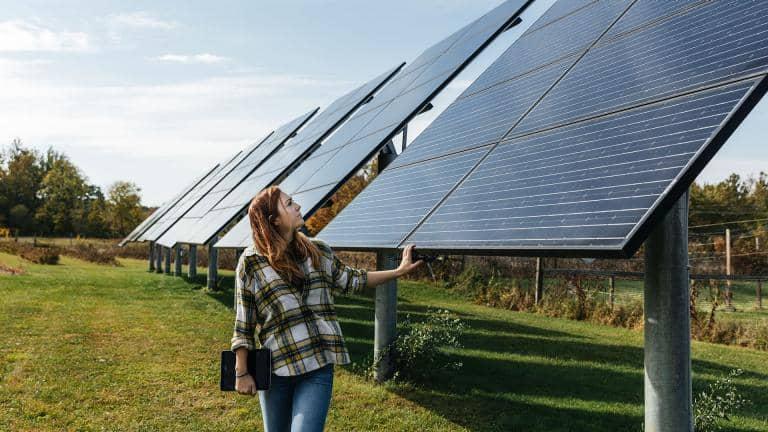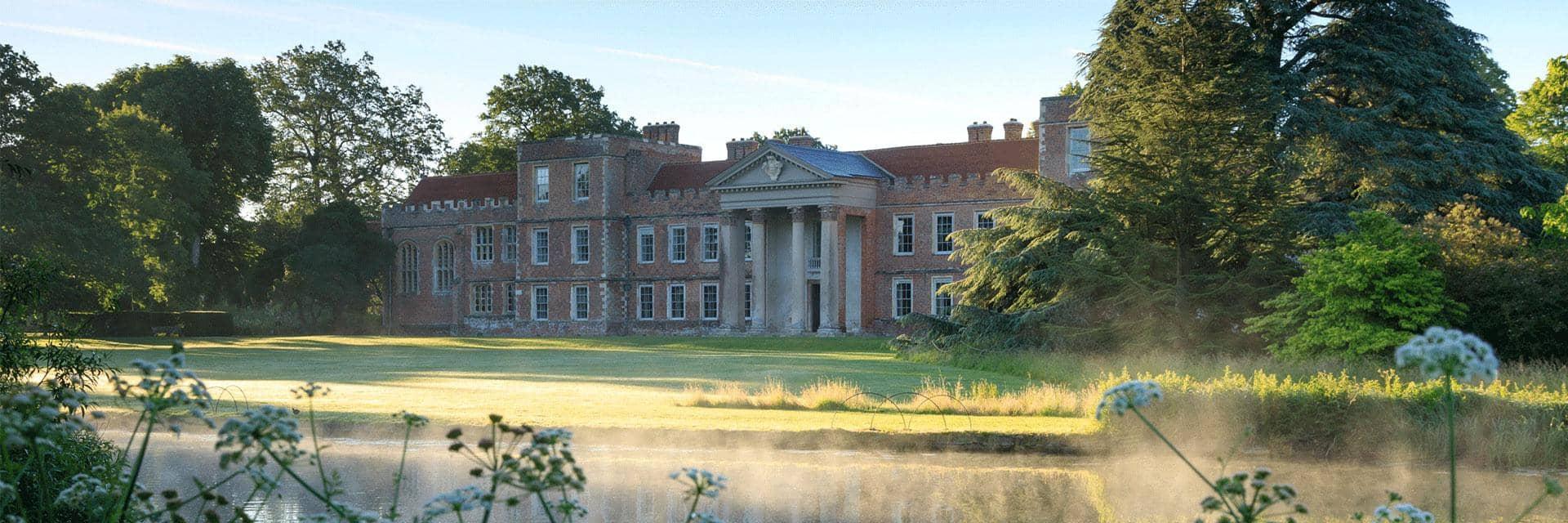
Connecting you to a sustainable future
Barclays believes that businesses can make a real contribution to tackling climate change and that we have a key role to play in helping to accelerate the transition to a low-carbon economy.

As well as working hard to protect huge tracts of the nation’s heritage from the effects of climate change, the National Trust is using its unparalleled reach to promote sustainability more widely.
Some organisations have to work hard to put sustainability at the centre of their thinking. For the National Trust, it’s not a big departure: “The philosophy of sustainability is wrapped up in what we’re all about,” argues Lizzy Carlyle, the Trust’s Head of Climate and Environment. “So in some ways, we’ve got it easy.”
At the same time, the Trust faces colossal challenges to combat the impacts of climate change and the decline of nature across its 250,000 hectares of land, 780 miles of coastline, 5,000 cottages, and the assets for which it’s best known: its historic houses and gardens.
The organisation grasped those threats at an early stage, first publishing a document on the subject in the early 2000s. The latest landmark was the announcement last year [2020] of its intention to achieve net zero carbon by 2030, through initiatives such as renewable energy investment, maintenance of peat bogs and the planting of 20 million trees.
We definitely don’t have all the answers, but biodiversity is a fascinating concept and could be a real gamechanger in terms of improving environmental performance.
Head of Climate and Environment
Since then, the Trust has ramped up communications to explain its objectives to its 5,000 employees and its volunteer workforce of nearly 50,000. “I don’t think there’s been a week when we haven’t shared an environmental story – we’re really lucky that we have a very rich stream of case study material coming from our places impacted by climate change we can use we can use,” says Carlyle.
The Trust also works hard to help its supporters understand the challenges. Recently it launched an interactive hazard map, illustrating the risks to places it cares for, while a new series of videos explains the Trust’s climate action programme. These include the replacement of oil-fired heating with a ground-sourced heat pump at Wimpole Hall, the impressive Cambridgeshire mansion dating from 1640. Ranks of solar panels in the car park now power the visitor centre.
Some people are yet to be convinced of the need for such developments, Carlyle admits: “Change makes everybody nervous, so we have to respect that and bring people along with us. But we are in a crisis and we’re getting bold about explaining what we need to do.”
With five million members on the books and 25 million visitors a year, the Trust is aware of the power of its platform to trigger wider change: “If we can encourage even a small proportion of those people to take action, that’s a much bigger win than anything we can do in our own properties.”
The Trust is adept at finding ways to achieve energy improvements without compromising the heritage value of its assets. “In one case we have taken the roof off a Grade I-listed mansion, stuck in appropriate insulation, and put the roof back on so the roof height is raised,” says Carlyle. “We have to think really carefully about that kind of work, and bring regulatory colleagues along with us.”
Five early pilot renewables projects paved the way for a £30m tranche of heat pumps, biomass boilers, solar and hydro projects. Along the way, the Trust has learned valuable lessons to apply to future schemes, such as the need to synchronise heat distribution systems with heat pumps to ensure the right areas of a building get the benefit.
“In our cottages, we’ve also learned the importance of having tenants fully understand how a renewable heat system works, rather than expecting it to perform in ways it doesn’t. That’s going to be a huge lesson for the country at large as we move to replacing gas boilers with heat pumps,” says Carlyle. “It’s not limited to the domestic scale: the custodians of our mansions have had to adapt in similar ways.”
The Trust has targeted travel too. Its ranger teams have enthusiastically adopted fleets of e-bikes and e-cargo bikes as replacements for pick-up trucks.
Visitor travel to National Trust sites by car result in significant carbon emissions and other impacts, especially given the remote nature of many venues. The pandemic stalled plans to work with public transport providers and incentivise non-car travel, but it remains high on the agenda.
The Trust’s interest in access to green space is not limited to its own land. “We have a team working with local councils and communities on how to make parks more attractive and accessible, and how to create green corridors from urban areas to the countryside – both of which have become so important through Covid-19,” says Carlyle.
Leading sustainability efforts in a vast organisation with a highly delegated structure, she has found the use of universally-recognised standards such as ISO14001 to be invaluable.
“Our properties have a lot of autonomy but having that framework and the rigour of third-party assurance means we’re gaining a consistent response and a minimum standard across the whole organisation,” Carlyle explains.
“What’s also really helped transform thinking in the Trust was the introduction of carbon accounting, which caused us to look up and down our value chain. It was a perspective that was missing from some of the environmental work carried out before.”
She is closely watching the emergence of a new framework around biodiversity: “Truly understanding the impacts of the decline of our natural environment, and where we can best make an impact, is something we’re just getting our heads around. We definitely don’t have all the answers, but it’s a fascinating concept and could be a real gamechanger in terms of improving environmental performance.”
Discover more about sustainability

Barclays believes that businesses can make a real contribution to tackling climate change and that we have a key role to play in helping to accelerate the transition to a low-carbon economy.
Barclays has an ambition to be a net zero bank by 2050, and a strategy to turn that ambition into action.
